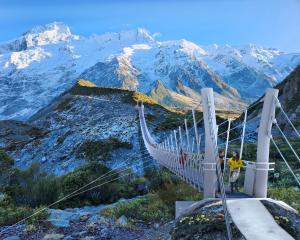
Forest & Bird has presented the Government with a 10,481-signature petition - and more than 3000 individual submissions - calling for an end to commercial fishing practices that contribute to the deaths of hundreds of marine mammals and thousands of seabirds every year.
The petition calls for the Government to commit to a "zero bycatch" policy as part of its proposed National Plan of Action for Seabirds, which closed for submissions last week.
The Government estimates potentially up to 14,400 birds are killed in New Zealand commercial trawl and longline fisheries.
The most recent official observer data showed more than 35 species of seabird were captured by commercial fishing boats in New Zealand waters in just 12 months from 2018-2019.

Many birds killed were rare and threatened animals such as the Otago shag, Fiordland crested penguin, and Antipodean albatross.
Forest & Bird chief executive Kevin Hague said the current situation was a "massacre" for wildlife.
"Killing over 14,000 birds a year is a massacre, and one that is completely legal under New Zealand law. It is clear our fishing rules need an urgent update."
Currently it is legal for commercial fishers to harm or kill protected species, as long as they report any captures.
But a recent Fisheries NZ report found many fishers were not reporting the seabirds they caught.
Over the 2017/2018 period, long-line vessels catching migratory species like tuna were nine times more likely to report non-fish bycatch when there were independent observers onboard, suggesting "a level of underreporting for non-observed trips".

There were similar levels of under-reporting over the past four years.
Department of Conservation research last year also that found the Antipodean albatross population was decreasing at an alarming rate, and there was evidence some were being killed by long-line fishing vessels.
The albatross population had been declining rapidly since 2004 and the number of females had halved.
The DoC research showed that of 16 female Antipodean albatrosses being monitored with tracking devices in 2019, two appeared to have been caught and killed by longline fishing vessels.
Five Antipodean albatross killed by a New Zealand long-line fishing boat in the Bay of Plenty region were just one of 30 species of seabird killed in New Zealand fisheries last year.

"It's time to put nature first, and only catch what we eat."
Seafood New Zealand chief executive Tim Pankhurst said they supported the draft plan's goal of "striving for no fishing-related seabird captures", but that some captures of seabirds were inevitable.
Overall, seabird bycatch was falling and the industry was looking at new ways to deter birds from vessels, he said.
They supported seabird risk management plans for vessels, and many vessels already voluntarily had onboard cameras, particularly in high-risk areas such as the black petrel habitat around the Hauraki Gulf.
Also supporting Forest & Bird's petition and zero bycatch goal were 25 marine and biology scientists, including the head of head of Natural Sciences at Auckland Museum, Dr Thomas Trnski; director of the National Aquarium of New Zealand, Dr Adrian Fowler; and head of the Department of Marine Science at University of Otago, Prof Stephen Dawson.
National Plan of Action for Seabirds
Forest & Bird is calling for the Government, as part of its National Plan of Action for Seabirds, to:
- Implement a zero bycatch goal with year-on-year reductions to reach negligible bycatch by 2025.
- Create binding actions and rules with consequences for non-compliance.
- Require fishers to use all available tools to deter seabirds from their fishing gear in line with international best practice.
- Put cameras or observers on all commercial fishing boats to ensure all fishers meet their obligations.
- End set netting in the habitat of threatened species like Hector's dolphins, and hoiho/yellow-eyed penguins.












